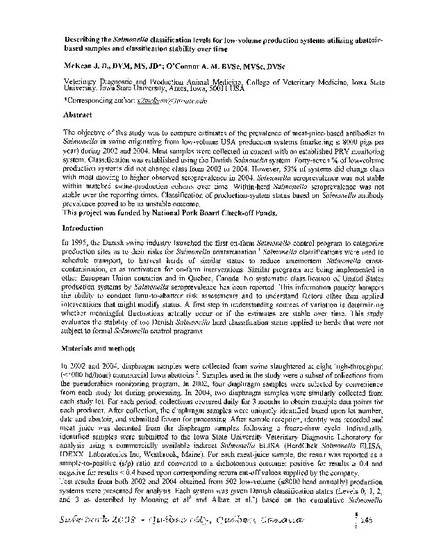
The objective of this study was to compare estimates of the prevalence of meat-juice-based antibodies to Salmonella in swine originating from low-volume USA production systems (marketing s 8000 pigs per year) during 2002 and 2004. Meat samples were collected in concert with an established PRV monitoring system. Classification was established using the Danish Salmonella system. Forty-seven% of low-volume production systems did not change class from 2002 to 2004. However, 53% of systems did change class with most moving to higher observed seroprevalence in 2004. Salmonella seroprevalence was not stable within matched swine-production cohorts over time. Within-herd Salmonella seroprevalence was not stable over the reporting times. Classification of production-system status based on Salmonella antibody prevalence proved to be an unstable outcome.
Available at: http://works.bepress.com/annette_oconnor/4/
